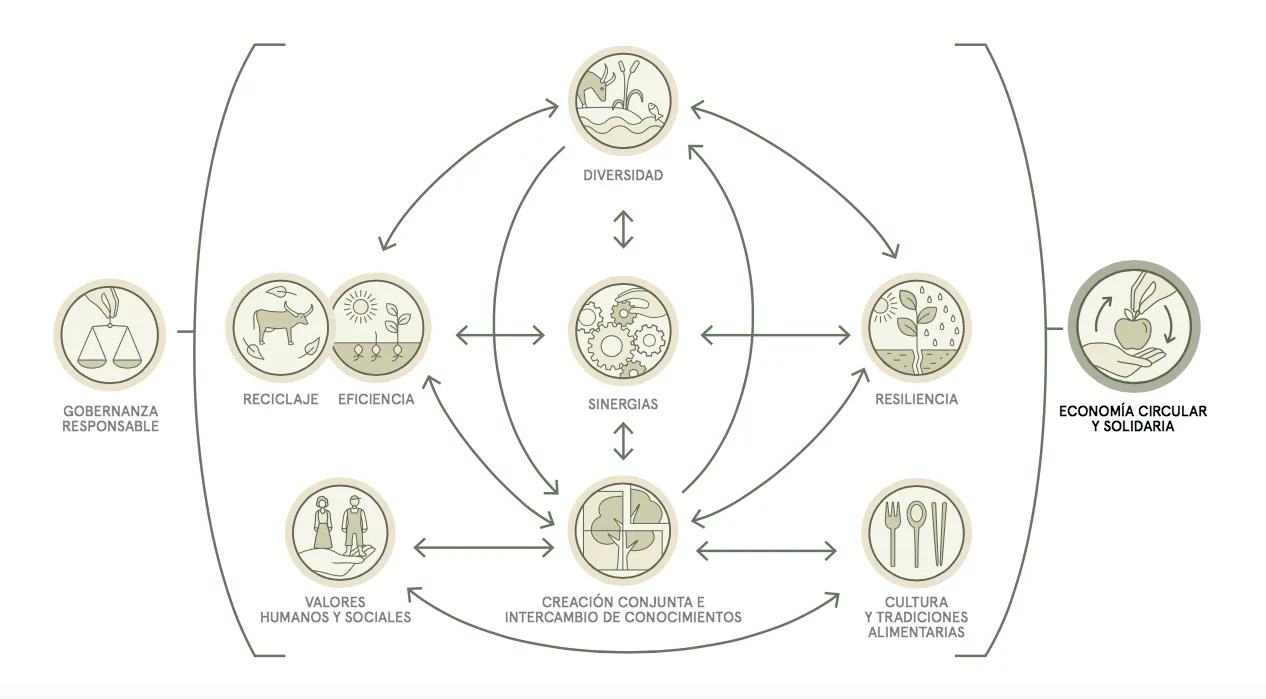Agroecology: Connecting the Dots of What We Grow



Agriculture has dominated landscapes surrounding human settlements since its discovery thousands of years ago. Nowadays, most of the food consumed by mankind is produced by industrialized agriculture. This system was born as a result of technological advances to deal with the rapid growth of the human population and its growing dietary needs. Unfortunately, these systems were not designed considering that they depend on finite resources; they use large portions of land, causing the loss of ecosystems and use large quantities of pesticides and fertilizers that degrade the soil, affecting its long-term fertility, contributing to the emission of greenhouse gases and polluting groundwater.
In order to avoid the high pressure that conventional farming practices place on natural resources, different sustainable agriculture practices have been developed. These practices seek to ensure that food production is carried out using natural resources and services in the best way, avoiding damaging them to ensure their availability in the future.
Agroecology is a comprehensive approach which applies social and ecological concepts and principles to the design and management of agricultural systems (Agroecology Fund, 2021). Its objective is to optimize the interaction between all living beings in a given environment (plants, animals and humans, etc.) considering the social aspects that must be taken into account for a sufficient, sustainable and just food system. In accordance with the United Nations Food Organization's (FAO) comprehensive vision for sustainable agriculture and food, agroecology is crucial for implementing a global response to climate change. Agroecology can be found in scientific literature since the beginning of the 20th century but has recently been taken up again by UN institutions.
According to FAO (2021), agroecology has 10 fundamental elements that together differentiate it from other concepts of sustainability. Identifying these elements can be useful for designing and implementing agroecology systems in diverse territories. These 10 elements are as follows:
Diversity: The diversification of crops both in species and in the height of the vegetation cover is crucial to ensure food security and at the same time protect, conserve and improve the state of natural resources. There are various practices such as intercropping, crop rotation and integrated multitrophic agriculture that increase biodiversity in cropland areas, increasing productivity and improving the provision of ecosystem services. On the other hand, the implementation of these practices increases ecological and socio-economic resilience.
Co-creation and knowledge exchange: Agroecology depends on the environmental, social, economic, cultural and political characteristics of the region where it is implemented. Agricultural innovations respond best when they are co-created through local participation, as they promote knowledge exchange and build trust between users and institutions.
Synergies: By optimizing biological synergies (for example, with the grazing of diverse species contributing to natural fertilization, seed dispersion, environmental conservation and soil protection), agroecology improves the efficiency and resilience of the resources used.
Efficiency: With agroecological systems, the need to use external resources (such as fertilizers) decreases, as local resources (water, biomass, nutrients) are better used. This reduces costs and negative impacts to the soil.
Recycling: Within agroecology, the waste of certain processes and systems becomes raw material for others. This leads to the recycling of nutrients, biomass and water. That's why it's important to contribute to synergy between different processes and activities.
Resilience: Agroecological systems have a greater capacity to recover from adverse events such as droughts, extreme weather events, pests and diseases. In the same way, this helps communities that depend on these systems to reduce their socio-economic vulnerability to these events.
Social and human values: As a system built from the bottom up, agroecology promotes values such as dignity, equity, inclusion and justice. In this way, agroecology becomes an important pillar for the fight towards gender equity, generating opportunities for women, promoting empowerment and turning them into their own agents of change.
Food and cultural traditions: By taking into account the context and location where it is being implemented, agroecology reconnects rural practices with local cultures and traditions. In this way, it contributes to the adoption of diverse and culturally appropriate diets, maintaining healthy ecosystems and promoting food security.
Responsible Governance: Agroecology needs fair and equitable access to land and natural resources. It is an element that promotes social justice and co-responsibility in investments necessary to protect the environment, biodiversity and ecosystem services.
Solidarity and circular economy: Agroecology reconnects consumers with producers through innovative solutions that exist within planetary boundaries, building towards an inclusive and just social base that develops in a sustainable way.

The 10 interrelated elements of agroecology. Source: FAO, 2021.
References
Agroecology Fund. (2021). What is agroecology? https://www.agroecologyfund.org/what-is-agroecology
FAO. (2021). Agroecology Knowledge Hub. http://www.fao.org/agroecolog
Explore reflections, research and field learning from our work in ecosystem restoration.